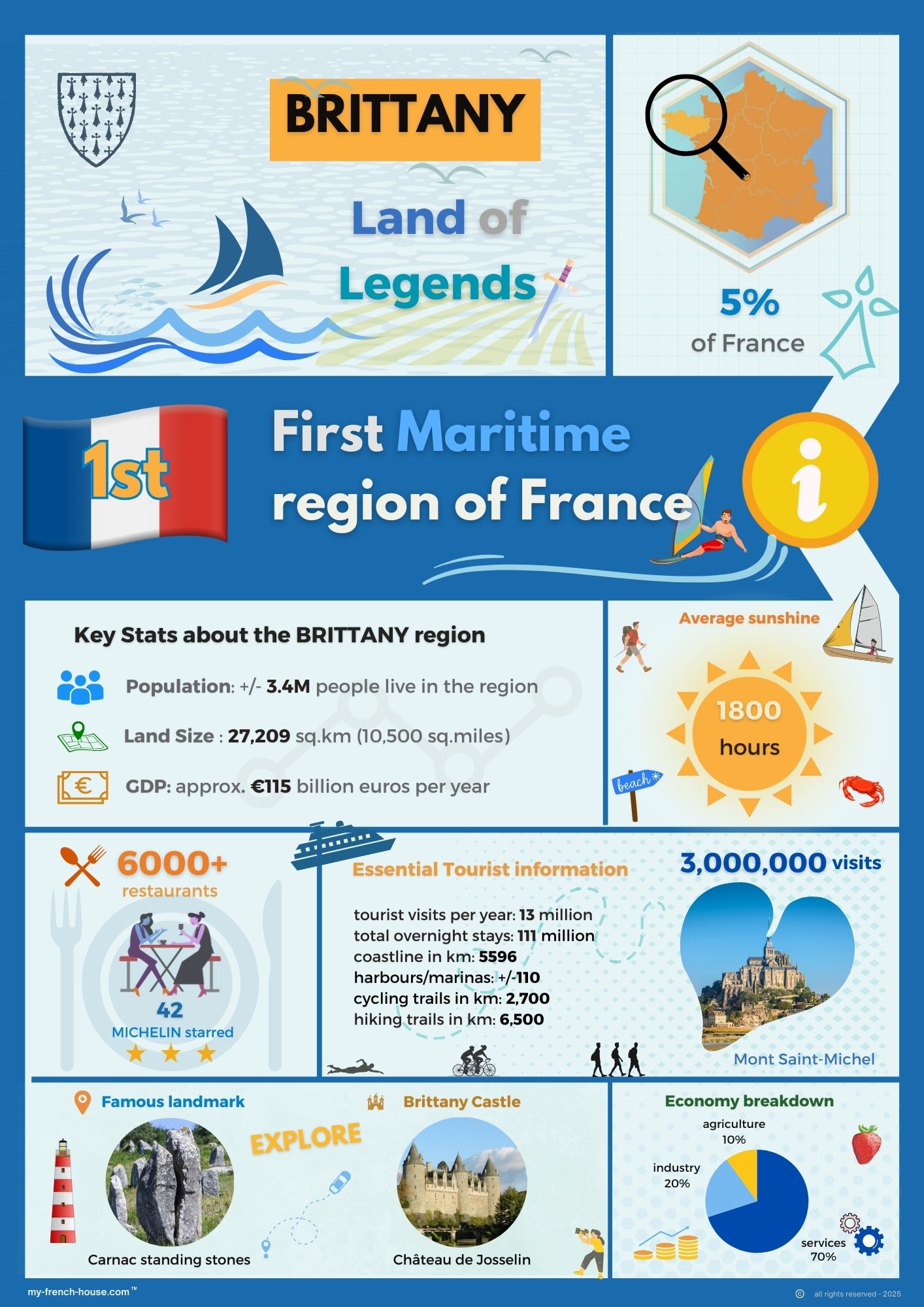Monthly Newsletter
Sign up for our monthly newsletter today…
A popular destination for many, the Brittany region boasts a 600 km sandy coastline that curves around the north-western tip of France. The area features fertile countryside and charming market towns. The Breton people are known for their resilience, practicality and friendliness. They maintain a strong connection to the land, the sea and their cultural heritage. In some areas, the Breton language is still spoken, and local traditions are celebrated at various festivals and Fêtes Nocturnes (Fest Noz) events.
The region is known for its excellent seafood, sweet crepes and tasty savoury buckwheat pancakes, fresh cider, 'galettes' biscuits and buttery Kouign-Amman cake. It offers a variety of sports including sailing, windsurfing, fishing, golf, hiking, mountain biking and horse riding.
Known by the Celts as Armorica, the 'land of the sea', Brittany has a long and lively past and deep Celtic roots. Prehistoric megaliths (standing stones) rise from the ground around Carnac, and it is said that young King Arthur received the sword of Excalibur from the fairy Vivian in the Paimpont Forest, 40 km south of Rennes.
Half-timbered buildings characterise the bustling, medieval towns of Vannes, Dinan and Rennes, while the castles and fortresses of Saint-Malo, Fougères and Vitré bear witness to Brittany’s strategic location.
The region has attracted many artists, and the lovely town of Pont-Aven is lined with galleries that display the works of both past and present painters. From cornfields to oyster beds, woodland walks to long sandy beaches, modern shipping ports to charming, historical towns, there is something for everyone in this varied and dynamic region.
Rennes, situated in Ille-et-Villaine, has been Brittany’s capital since the 16th century. Home to the Breton Houses of Parliament, it is a hub of cultural activity, nurtured by its large student population.
The department of Côtes-d'Armor on the northern shore is lined with seaside resorts, pink granite coves and traditional fishing ports. Morbihan, on the southern coast, is backed by wooded river valleys and has a gentler feel and a milder climate. Exposed to the rough Atlantic winds, Finistère in the west has drama. The name means 'the end of the Earth'!
The main cities are Rennes, Brest, Quimper, Lorient, and Saint-Malo. They can be accessed using the road network (motorways, national and departmental roads), the train network, or by air. Here's a list of the region's airports and main train stations.
Brittany is a land rich in spirit, where history, art, culture, and nature coexist harmoniously with modern conveniences. Shopping opportunities are plentiful and easily accessible.
Transportation is fast and convenient, with Paris being less than two hours away by train from Rennes. Ferries run from the ports of Roscoff and Saint-Malo to the UK, and the excellent network of dual carriageways makes it easy to drive throughout this beautiful region of France.
Take a glance at our infographic below to learn more facts and statistics about this magical region. Click on the links on this page to explore a department in the area, and browse our properties for sale in Brittany.
